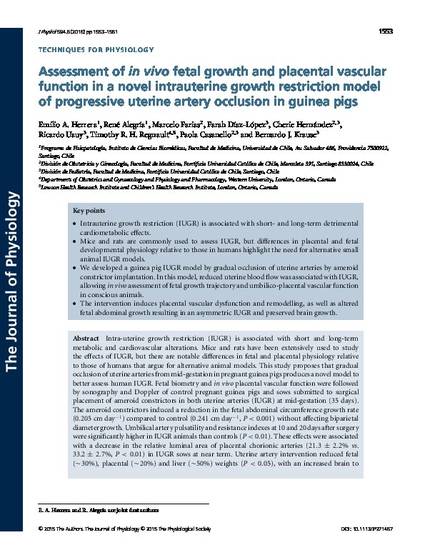
Intra-uterine growth restriction (IUGR) is associated with short and long-term metabolic and cardiovascular alterations. Mice and rats have been extensively used to study the effects of IUGR, but there are notable differences in fetal and placental physiology relative to those of humans that argue for alternative animal models. This study proposes that gradual occlusion of uterine arteries from mid-gestation in pregnant guinea pigs produces a novel model to better assess human IUGR. Fetal biometry and in vivo placental vascular function were followed by sonography and Doppler of control pregnant guinea pigs and sows submitted to surgical placement of ameroid constrictors in both uterine arteries (IUGR) at mid-gestation (35 days). The ameroid constrictors induced a reduction in the fetal abdominal circumference growth rate (0.205 cm day-1) compared to control (0.241 cm day-1, P < 0.001) without affecting biparietal diameter growth. Umbilical artery pulsatility and resistance indexes at 10 and 20 days after surgery were significantly higher in IUGR animals than controls (P < 0.01). These effects were associated with a decrease in the relative luminal area of placental chorionic arteries (21.3 ± 2.2% vs. 33.2 ± 2.7%, P < 0.01) in IUGR sows at near term. Uterine artery intervention reduced fetal (∼30%), placental (∼20%) and liver (∼50%) weights (P < 0.05), with an increased brain to liver ratio (P < 0.001) relative to the control group. These data demonstrate that the ameroid constrictor implantations in uterine arteries in pregnant guinea pigs lead to placental vascular dysfunction and altered fetal growth that induces asymmetric IUGR.
Available at: http://works.bepress.com/timothy-regnault/9/
